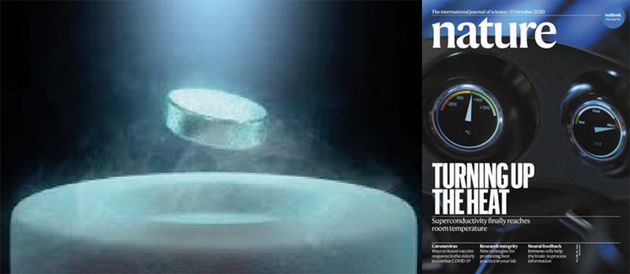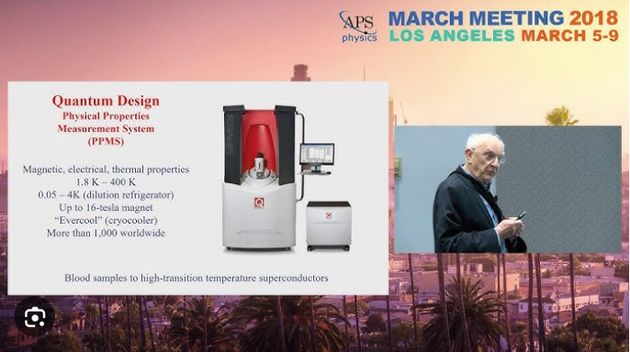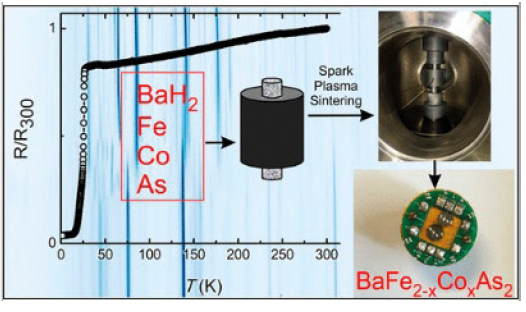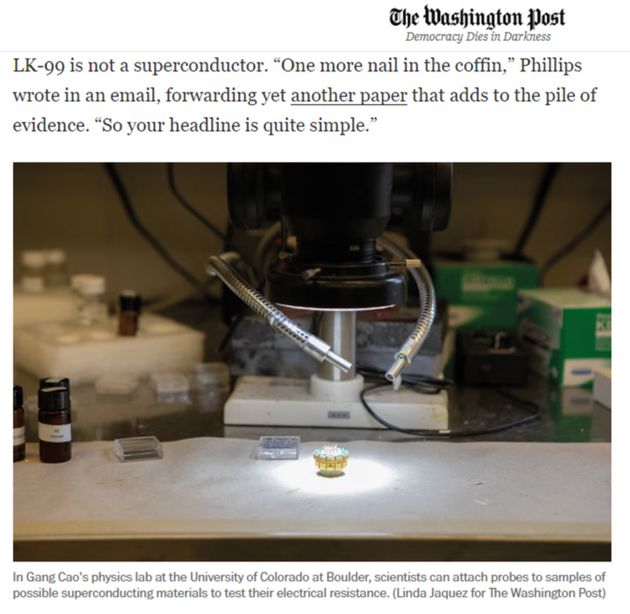MPMS and PPMS: Pioneers in the research of room-temperature superconductivity
The search for a room-temperature superconductor is still one of the most exciting endeavors in experimental condensed matter physics. In the past years, published reports on the discovery of this long sought-after material have attracted a lot of attention. There were many controversies in the research community about these discoveries, and many of them were evaluated and refuted. A material that shows superconductive properties at room temperature would allow electric currents to flow without the power losses that occur even in the best conventional metal conductors existing today.
The MPMS (Magnetic Property Measurement System) and PPMS (Physical Property Measurement System) from Quantum Design are the leading platforms for cryogenic material characterization that are used in the search for new superconducting materials. Almost every research institute and laboratory that is involved in the search uses one, both or several of these instruments when conducting experiments in the characterization of new materials.
The magnetic AC susceptibility is a great test of the superconductivity in all materials, including materials under high pressure. The jump to superconductivity leads to a major drop in the AC susceptibility. Using the most sensitive technology for the measurement of susceptibility based on a SQUID sensor, makes the MPMS 3 the world-leading AC-susceptometer. A long-time expert in the field is Prof. Cava from the department of chemistry at the Princeton University. The group states they discover one to two superconductors per year on average. The Cava research group works with both the MPMS and PPMS. With the discovery of superconductivity at temperatures to about 22 K in the year 1988, Cava and his group achieved a transition temperature of 29.8 K in a Ba0.6K0.4BiO3 single crystal. Using the superconducting transition temperature for this material was determined by Cava et al. on the basis of a magnetization measurement of the magnetic shielding (aka Meissner effect) while cooling the sample in a magnetic field of 190 Oe in the MPMS. Together with the first discovery of high-temperature superconductivity by J.G. Bednorz and Prof. Mueller at IBM (Zurich) in the La-Ba-Cu-O materials, the results from Prof. Cava helped break through the psychological barrier that had kept physicists from looking for superconductivity at room temperature. Currently, cuprates under normal atmospheric pressure hold the record in transition temperature and show superconductivity to 138 K (-135 C). These were discovered by Prof. Schilling and his group at the ETH in Zurich and also characterized with an MPMS.
The resistance measurements conducted in the PPMS have soon become the standard testing method for the validation of claims on the discovery of new superconductors, especially at room temperature. Data analysis, especially the so-called “background subtraction”, must be carried out very carefully since the relevant signal is often very small compared with the noise. This and other intricacies can lead to misleading interpretations of test results.
Fig. 4 shows a workbench in the physics lab of Prof. Gan Cao at the University of Colorado Boulder, where a sample of LK-99 is mounted on a PPMS puck for a test. LK-998 is the latest material said to be superconductive at room temperature. The Washington Post tells the story of the LK-99 discovery, which began with the announcement of Korean researchers that went viral on social media. The alleged discovery led to a temporary rally of Korean superconductor stocks (see fig. 5), while they were met with great skepticism among the research community.
As often with similar discoveries, both the PPMS and MPMS played a role during the first research steps, when the discovery of the superconductive state in LK-99 was claimed, and during the subsequent efforts of labs around the world to repeat the experiments and achieve the same results. No doubt that the way that experiments are carried out, data are analyzed and results are interpreted still has a high significance for the evaluation and acceptance of such a discovery, and in particular for a monumental discovery such as room-temperature superconductivity. The MPMS and PPMS platforms are fundamental tools for researchers that work in this field. It is unlikely that a new superconductive material and especially a room-temperature superconductor will be discovered, without its thorough characterization inside a Quantum Design MPMS or PPMS.
This is how these platforms contribute to the scientific process and to the understanding of phenomena like the room-temperature superconductivity:
Precision measurements:
MPMS and PPMS systems allow high-precision and high-sensitivity measurements of different physical properties like magnetic susceptibility, electrical resistance, specific heat and more. In connection with superconductivity research, they enable the precise measurement of the critical temperature (Tc), critical magnetic field (Hc) and other relevant parameters.
Characterization:
The systems facilitate the systematic evaluation of material properties under various conditions like different temperatures, magnetic fields and loads. This helps with the identification of the unique behavior and the material properties of materials, including their service transitions and critical parameters.
Understanding phase transitions:
Superconductive materials show phase transitions at certain temperatures and magnetic field strengths. With the MPMS and PPMS systems, researchers can track and analyze these transitions and thus evaluate the underlying mechanisms.
Versatility:
MPMS and PPMS systems are versatile instruments that can be used for a broad range of materials and phenomena aside from superconductivity. This versatility makes them very valuable for interdisciplinary research.
Real time monitoring:
Researchers can monitor material behavior at temperature or magnetic field changes in real time and gain insights into the dynamic processes at superconducting transitions.
Comparison and validation:
The availability of standardized measurement methods and devices like the MPMS and PPMS systems facilitates the comparison between different research groups and labs. This enhances the validation and reproducibility of test results.
Innovation:
Researchers can use the platforms to develop new materials with optimized properties for potential technological applications. By understanding the behavior of existing materials they can adapt compositions and structures to achieve the desired superconducting properties.








